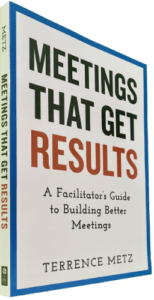Western society, and to an increasing amount, the rest of the world, depends on the voting method of decision-making.
Various levels of government including federal, state, and local elections rely on plurality voting, whereby one person equals one vote. While some will argue that a benevolent autocrat provides a fairer form of governance, most democracies rely on a multi-level system for its checks and balances. For example, tripartite arrangements normally allow separate voting for the legislative, executive, and judicial branches. Democracies frequently refer to this method as “Plurality Voting.” Experience shows that voting leads to lower-quality decisions and many conclude, voting sucks.
There are other methods of voting, to avoid lower-quality decisions, and arguably none of them are as effective as consensus-based decision-making. Note for example . . .
Approval Voting
Method: Voters are provided one vote for each option they deem acceptable.
Examples: Numerous not-for-profit organizations use Approval Voting to select their board of directors and officers.
Results: The approach does little to distinguish between acceptable options and outstanding options. Results have been known to be highly erratic.
Borda Count
Method: Voters ordinate all options from top to bottom, where more is better. With ten options, the best is assigned a value of ten while the least favorite is assigned a value of one. The highest score wins.
Examples: The method used by the Associated Press for its college football and basketball rankings.
Results: The favorite method of promoters for voting, unfortunately, does little to help distinguish the mid-range and lower-tier options. As voters know less or become more ambivalent (e.g., fourth versus fifth), final tallies can become quite skewed.
Cumulative Voting
Method: Voters are assigned a batch of votes (i.e., units of value). They distribute them across the options as they see fit. With a batch of ten votes, for example, you may assign seven votes to your favorite and three to your second favorite.
Examples: Texas and Arkansas use this method in some legal jurisdictions along with some corporate board rooms.
Results: There are bound to be winners and losers—much gaming is involved when, for example, your second favorite is more likely to be the victor, yet each unit assigned to your second choice, reduces the chances of your first choice being selected. Reportedly, many “second favorites” win with this method (see the Abilene Paradox).
Electoral College
Method: Winners of the presidential election in each state get all of the pre-assigned electoral votes (equal to the number of seats in Congress), regardless of the margin of victory.
Examples: Only in America, where most states assign their marginal winners, all of their electoral votes.
Results: Since it is possible to “win” the popular vote but “lose” the election, some have suggested that the Supreme Court of America will rule on its legality. Look at the Gore versus Bush election in 2000.
Instant Runoff
Method: Voters rank their options and if the top pick does not generate a simple majority (i.e., greater than 50 percent), the option with the fewest votes is dropped, and members vote again until a winner emerges.
Examples: Jurisdictions worldwide, from Australia to San Francisco rely on this method.
Results: While arguably a stronger method than simple “Plurality Voting”, mathematical models have shown that sub-optimal (i.e., initially secondary or tertiary options) options rise faster than the primary option and frequently “win”.
Our MGRUSH alumni have experienced the weakness of voting with the Goethe demonstration during class. Unlike consensus building that yields a win-win result, voting represents bigger numbers, not better decisions. Plus, there is always a loser.
______
Don’t ruin your career by hosting bad meetings. Sign up for a workshop or send this to someone who should. MGRUSH workshops focus on meeting design and practice. Each person practices tools, methods, and activities every day during the week. Therefore, while some call this immersion, we call it the road to building high-value facilitation skills.
Our workshops also provide a superb way to earn up to 40 SEUs from the Scrum Alliance, 40 CDUs from IIBA, 40 Continuous Learning Points (CLPs) based on Federal Acquisition Certification Continuous Professional Learning Requirements using Training and Education activities, 40 Professional Development Units (PDUs) from SAVE International, as well as 4.0 CEUs for other professions. (See workshop and Reference Manual descriptions for details.)
Want a free 10-minute break timer? Sign up for our once-monthly newsletter HERE and receive a timer along with four other of our favorite facilitation tools, free.

Terrence Metz, president of MG RUSH Facilitation Training, was just 22-years-old and working as a Sales Engineer at Honeywell when he recognized a widespread problem—most meetings were ineffective and poorly led, wasting both time and company resources. However, he also observed meetings that worked. What set them apart? A well-prepared leader who structured the session to ensure participants contributed meaningfully and achieved clear outcomes.
Throughout his career, Metz, who earned an MBA from Kellogg (Northwestern University) experienced and also trained in various facilitation techniques. In 2004, he purchased MG RUSH where he shifted his focus toward improving established meeting designs and building a curriculum that would teach others how to lead, facilitate, and structure meetings that drive results. His expertise in training world-class facilitators led to the 2020 publication of Meetings That Get Results: A Guide to Building Better Meetings, a comprehensive resource on effectively building consensus.
Grounded in the principle that “nobody is smarter than everybody,” the book details the why, what, and how of building consensus when making decisions, planning, and solving problems. Along with a Participant’s Guide and supplemental workshops, it supports learning from foundational awareness to professional certification.
Metz’s first book, Change or Die: A Business Process Improvement Manual, tackled the challenges of process optimization. His upcoming book, Catalyst: Facilitating Innovation, focuses on meetings and workshops that don’t simply end when time runs out but conclude with actionable next steps and clear assignments—ensuring progress beyond discussions and ideas.





> Results: The approach does little to distinguish between acceptable options and outstanding options. Results have been known to be highly erratic.
i would strongly disagree with this assessment. i’ve studied voting theory for almost 20 years, was mentioned in the 2008 book “gaming the vote” by william poundstone, and co-founded the center for election science. full disclosure: ces promotes approval voting.
the intensity of support between different options actually impacts the strategic “approval threshold”, as explained here by by me, but citing the research of a princeton math phd named warren smith, who is arguably history’s greatest expert on voting methods. (smith owns the site and served as an editor on this.)
https://www.rangevoting.org/RVstrat6
few voters are this mathematically precise, but this is indeed the strategy the intuitively use to a close approximation. e.gh. i really prefer elizabeth warren, but biden’s not too bad and i’m really worried about trump winning, so i’m going to lower my threshold and approve them both.”
the aggregate result of these kinds of strategies over a variety of voting methods has been studied via computer simulation by both warren smith and contemporaries like jameson quinn, a harvard stats phd who also served with myself and smith on the board of ces. some results summarized here:
https://www.rangevoting.org/RVstrat6
https://electionscience.github.io/vse-sim/
suffice to say, that approval voting performs extremely well, and tends to elect the condorcet winner whenever one exists.
clay shentrup
portland, or